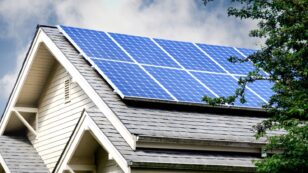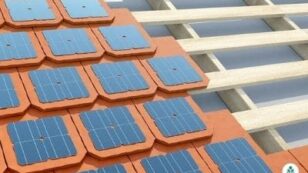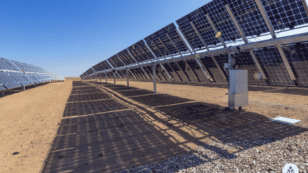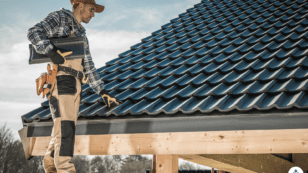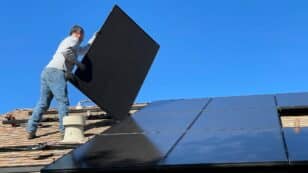
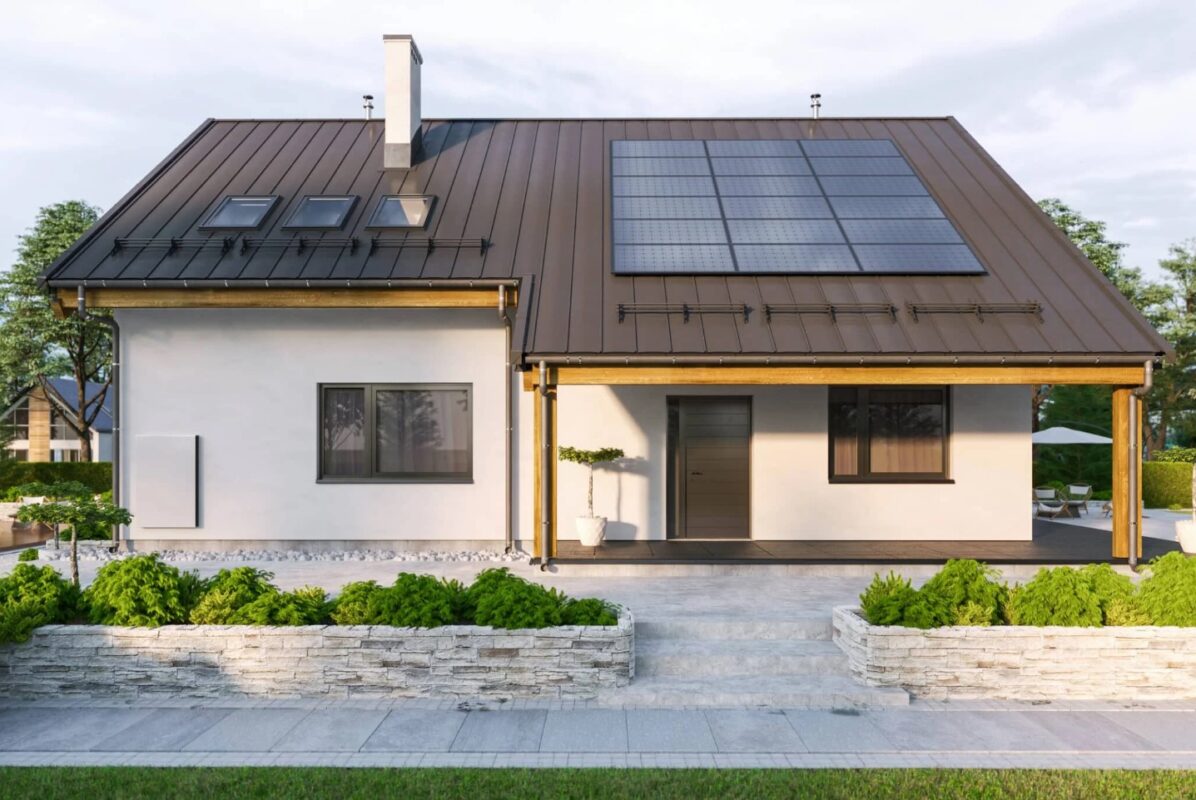
Best Direction and Angle for Solar Panels (Tips to Maximize Output in 2024)
Here’s what we’ll cover in this guide:
- How roof direction affects solar efficiency
- What factors influence solar energy production
- How to determine if your roof is a good candidate for solar
Each product and or company featured here has been independently selected by the writer. You can learn more about our review methodology here. If you make a purchase using the links included, we may earn commission.
What is the Best Direction for Solar Panels?
So, what is the best direction for solar panels? For homeowners who live in the Northern Hemisphere, the rule of thumb is that solar panels should be oriented toward true south. (For those in the Southern Hemisphere, solar panels should be oriented toward true north.)
This is the best orientation because it ensures that solar panels receive direct sunlight throughout the day.
Note that, when we talk about true south, we’re talking about geographic south, not magnetic south. In other words, you should orient your solar energy system based on the lines of longitude on a map, not by the directions on a compass.
Something else to keep in mind is that it may be beneficial to have a rotation slightly away from the best direction if you want to adjust the hours that your solar panels provide you energy (like facing them southwest to get more energy in the late afternoon as the sun is setting).
Hopefully, you have a south-facing roof that is optimally positioned for your solar panels. If the orientation of your roof isn’t quite right, however, that doesn’t mean solar power is off the table. There are several other options to consider, including solar carports and ground-mounted solar panels that can utilize south-facing panels for optimum electricity production.

SunPower
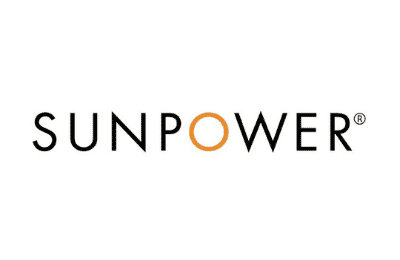
Nationwide Service
Average cost
Pros
- Most efficient panels on the market
- National coverage
- Cradle to Cradle sustainability certification
- Great warranty coverage
Cons
- Expensive
- Customer service varies by local dealer
SunPower designs and installs industry-leading residential solar and storage solutions across all 50 states. With a storied history of innovation dating back to 1985, no other company on this list can match SunPower’s experience and expertise.
SunPower earns its position as the top national installer on our list for a handful of reasons: It installs the most efficient solar technology on the residential market, offers the most expansive service area and backs its installations with a warranty well above the industry standard. All the while, SunPower pioneers sustainability efforts within the industry.
If that weren’t enough, SunPower systems come packaged with products all manufactured in-house by its sister company, Maxeon. This means that your panels, solar cells, inverters, battery and EV chargers are designed to work together and are all covered under the same warranty.
SunPower’s biggest downside? Its high-efficiency panels are considerably more expensive than most of its competitors’ products. However, its powerful panels are workhorses that make up for the initial cost with more backend production (think about this like spending more money for a car that gets more miles per gallon).
Facts and Figures: SunPower
| EcoWatch Rating |
|---|
| Better Business Bureau (BBB) Rating |
| Year Founded |
| Average Cost ($-$$$$$) |
| Solar Services |
| Brands of Solar Equipment Offered |
| Warranty Coverage |
| 5 |
| A+ |
| 1985 |
| $$$$ |
| Solar Panels, Solar Batteries, EV Chargers, System Monitoring |
| SunPower Panels |
| 25-year all-inclusive warranty |

Blue Raven Solar
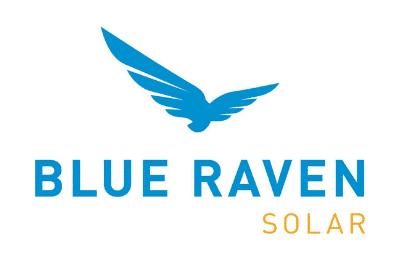
Regional Service
Average cost
Pros
- Industry-leading in-house financing
- Competitive pricing
- Excellent reputation
Cons
- Doesn't offer solar batteries (coming 2022)
We like Blue Raven Solar because it understands that, for most homeowners, the cost of solar presents the biggest barrier to entry.
For that reason, Blue Raven Solar developed an innovative solar financing plan that offers in-house, flexible, zero-money-down options. The results speak for themselves, as Blue Raven Solar is now one of the fastest-growing solar companies in the nation and was recently acquired by SunPower. Its BluePower Plus+ plan (exclusive to Blue Raven) mimics the flexible structure of a lease while still providing the greatest benefits of owning your system.
Eligible homeowners enjoy 18 months of solar power before having to pay their first bill. When coupled with the federal solar investment tax credit (ITC), the initial energy savings can offset more than a third of the overall cost of a system before requiring a dollar down.
In contrast, other installers can only offer similar financing through solar leases, PPAs or third-party providers (such as Mosaic or Sunlight). Third-party loan providers can complicate the process, while opting for a loan or PPA will disqualify you from some of solar’s biggest benefits (additional property value, federal solar tax credit and local solar incentives).
Facts and Figures: Blue Raven Solar
| EcoWatch Rating |
|---|
| Better Business Bureau (BBB) Rating |
| Year Founded |
| Average Cost ($-$$$$$) |
| Solar Services |
| Brands of Solar Equipment Offered |
| Warranty Coverage |
| 4.5 |
| A+ |
| 2014 |
| $$ |
| Solar Panels, System Monitoring |
| Trina Solar, Canadian Solar, SolarEdge, Silfab, SunPower |
| 25-year manufacturer warranty; 10-year workmanship warranty, 2-year production guarantee |
Basics of Solar Panel Orientation
As you prepare to install a solar system on your home, you’ll want to set it up so that your solar panels operate efficiently. The type of solar panels that you use plays a big part in how effective your system is, but two aspects that many homeowners overlook are the direction and angle that their solar panels face.
You obviously wouldn’t want your panels facing the ground since that would limit their exposure to solar rays, but is there truly a “best angle” for solar panels?
To get a free, no-obligation quote and set up a consultation with a top solar company near you, click below.
What is the Best Angle for Solar Panels?
In addition to choosing the best direction for your solar panels, it’s also helpful to select the right angle. Here, the general rule of thumb is to set the solar panel tilt angle equal to the geographical latitude. In other words, if you’re at 35 degrees latitude, set your panels at a 35-degree angle.
The angle of your solar panels will help ensure the sun hits them perpendicularly, promoting the highest solar production and, thus, the highest electricity bill savings for your household. With that said, you’ll also want to consider how weather impacts solar panels.
A good example of this is heavy snowfall. If you live in a part of the country where there is excessive snow accumulation, that could ultimately impede the efficacy of your solar panels. By tilting your panels at a sharper angle, you can minimize the buildup of snow or other debris.
This may all sound technical, but it’s worth noting that professional solar installers will work with you to design a solar power system that works optimally; that includes recommending where to place your panels, how to angle them and more.
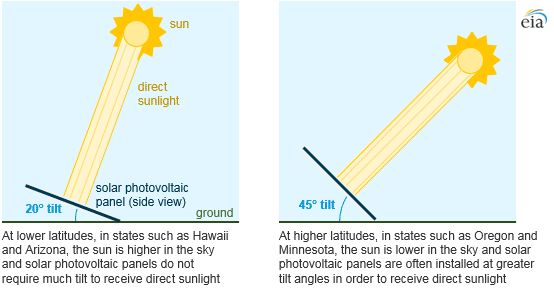
How Seasons Affect Solar Panel Angle
The angle of the sun changes depending on the time of year, and so therefore will the ideal angle of your solar PV panels.
If you live in the northern hemisphere, the sun sits lower in the sky during the winter months, so your solar panels would get more direct sunlight if they’re placed at a steeper angle than your latitude. In the summer months, the sun sits higher in the sky, so you’ll want the panels a little less steep.
To keep your solar panels at an optimal angle year round, you’d need a solar tracker and a way to adjust your panel tilt accordingly. You could install a tracking system that acts as a solar angle calculator, but it would significantly increase the cost of the solar equipment and most homeowners don’t find that it’s worth the added cost in terms of increased power production.
Most solar panel systems are installed at a calculated fixed angle optimal for the best average annual solar electricity production for your home.
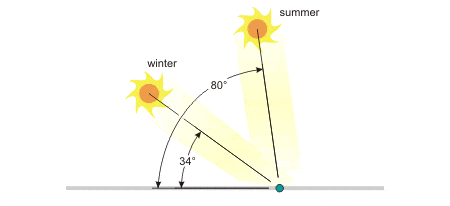
Solar Panel Tracking Systems
For ground-mounted panels, you might also consider installing a solar panel tracking system. Solar trackers maximize panel efficiency by rotating your panels throughout the day, allowing them to follow the movement of the sun from its rise to its set. Just how much more efficient can a tracker make your solar panel system?
One study showed that on a clear day, the average efficiency of a tracking panel was about 67%, while fixed panels only got about 40% efficiency. As you consider solar panel tracking systems, you’ll need to decide between a single-axis or a dual-axis system.
Single axis systems only move in one direction, typically north to south. A dual axis system allows for movement along the north-south axis and the east-west axis. Dual axis systems take up more space, and thus are mostly used in commercial settings.
They can certainly be effective, enabling your solar panels to reposition in accordance with changing seasons when the sun is higher or lower in the sky, but they typically aren’t necessary for residential use.
Is Your Roof Positioned Well For Solar Panels?
When deciding whether solar panels are worth it for your home, roof position should always be taken into consideration. Most reputable solar installers offer free home consultations, during which a representative will survey your roof and let you know whether rooftop solar would be a good idea based on your roof’s positioning and how much sunlight your home receives throughout the year.
To get a free, no-obligation quote and set up a consultation with a top solar company near you, click below.
FAQ: Best Direction for Solar Panels
The angle of a solar panel describes its tilt, while the orientation is the cardinal direction the panel is facing.
For most homeowners in the Northern Hemisphere, panels need to face toward the geographic south, but not necessarily toward the east or west. The north-south axis tends to be more determinative of a solar panel’s efficiency.
The best angle for solar panels is close to the latitude of your home. For example, if you live in Boston, Massachusetts, your home is at 42° latitude, and you’ll want your solar panels tilted at about 42°. If you want to make seasonal adjustments for increased efficiency, add 15° in the winter and subtract 15° in the summer.
For homeowners in the Northern Hemisphere, geographic south is typically the best direction for solar panels.
For homeowners who live in the Northern Hemisphere, it is recommended that solar panels be oriented toward geographic south (as opposed to magnetic south). In other words, orient your panels according to lines of longitude rather than magnetic poles.
For Australian homeowners, north-facing solar panels tend to be most effective, though a professional installer can give a more specific recommendation.
Comparing authorized solar partners
-
- Most efficient panels on the market
- National coverage
- Cradle to Cradle sustainability certification
- Great warranty coverage
- Expensive
- Customer service varies by local dealer
A+Best National Provider1985SunPower Panels25-year all-inclusive warranty
Having trouble deciding? Click below and use our process to receive multiple quotes instead:

 233k
233k  41k
41k  Subscribe
Subscribe 


